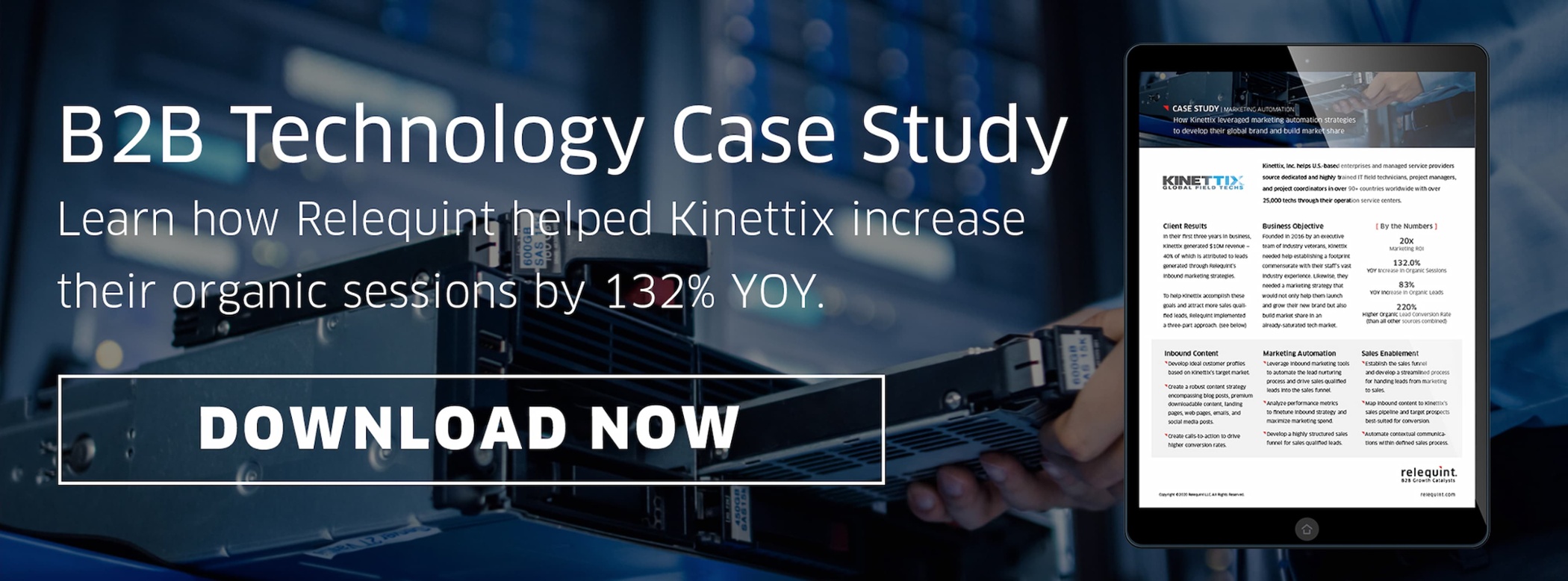.jpg?width=431&height=281&name=The%20B2B%20Tech%20Marketers%20Guide%20to%20Account-Based%20Marketing%20(ABM).jpg) As marketers, we know that personalized marketing helps us meet our target customers where they are, addressing their unique pain points and guiding them through the decision-making process. However, customized marketing strategies can only go so far. You can leverage personalization tokens, A/B test landing pages, and create relevant content in perpetuity — but you’re still speaking to an idealized version of your customers.
As marketers, we know that personalized marketing helps us meet our target customers where they are, addressing their unique pain points and guiding them through the decision-making process. However, customized marketing strategies can only go so far. You can leverage personalization tokens, A/B test landing pages, and create relevant content in perpetuity — but you’re still speaking to an idealized version of your customers.
For a more targeted approach, B2B technology marketers should supplement their inbound strategies with account-based marketing (ABM).
What You Need to Know About Account-Based Marketing
Instead of implementing blanket campaigns to appeal to your buyer personas, account-based marketing uses highly targeted and personalized campaigns to convert specific, high-priority accounts into customers.
The strategy is extremely valuable for B2B technology companies that are looking to land high-dollar accounts. B2B tech companies already have a long sales cycle due to their services costing more than their B2C counterparts. Large accounts, such as enterprise-level clients, can further extend this cycle by requiring partnerships to be approved by multiple people in the organization.
ABM involves aligning your marketing and sales teams in order to identify these decision makers, address their specific needs, and turn them into customers.
In essence, account-based marketing is the inbound marketing funnel in reverse. With ABM, the funnel starts with the target company instead of ending with it. The next step involves engaging that specific target with personalized information. Finally, you must build and nurture the relationship by providing the target with new opportunities.
The Benefits of Account-Based Marketing
According to HubSpot, 67% of brands leveraged account-based marketing in 2020 — and for good reason. This strategy is highly effective and can result in a significant ROI.
As previously mentioned, ABM can help your company land large, high-priority accounts. In fact, in a 2017 survey by SiriusDecisions, 91% of marketers reported that their ABM accounts had a bigger deal size than non-ABM accounts. A quarter of respondents also reported that ABM deal sizes were at least 50% larger than other deals. Beyond the initial deal, these “big spenders” tend to have a higher lifetime value than smaller accounts, especially if the client invests in more services over time.
Not only does ABM drive revenue, but it’s also incredibly cost-effective. Rather than producing content that broadly appeals to your buyer persona, ABM strategies focus on creating assets that are highly targeted and appeal to specific decision makers. This approach can help you maximize not only your budget but also your marketing team’s time and energy.
Plus, since you’ve already identified which companies are a sales qualified lead, you’re likely to have a higher conversion rate and lower acquisition cost than with inbound marketing alone.
Tips For Implementing an Account-Based Marketing Strategy
ABM can require a significant amount of work upfront but is well worth the effort. Here are some tips to help your B2B tech company deploy this strategy.
1. Do Your Research
The first and most critical step in an ABM campaign is identifying the accounts that you want to target. To choose the best targets, marketing and sales should work closely together to identify which prospects reflect their ideal customer type.
If you’re not sure where to start, try focusing on a particular industry or geographic area. You can also analyze the data in your CRM and look for companies that are engaging with your inbound content but don’t have a deal associated with them yet. Don’t forget to look at your existing deals and identify any commonalities (e.g. industry, company size, value) that are characteristic of a good-fit customer.
2. Align With Sales
Once the targets are defined, the sales and marketing departments will need to rejoin forces to determine how the outreach and follow-up will occur with the accounts. The team will need to lay out the who, what, when, and how. Take time to answer the following questions:
- Who are the stakeholders at each target company?
- What kinds of content will best attract and engage these stakeholders?
- How will we share this content? Which marketing channels will we use?
- When will we contact the stakeholders?
Sales and marketing must agree on the answers to these questions for the ABM strategy to be effective. Also, each department should fully understand their duties. Marketing will be responsible for the overall strategy, messaging, and outreach, while sales will focus on follow-ups, conversions, and relationship building.
3. Play the Long Game
Account-based marketing won’t bring in large deals overnight. It takes time to build trust between your sales team and target companies’ stakeholders. Be patient and keep an open line of communication. Leverage marketing automation to create email sequences that help your sales team effortlessly follow-up with stakeholders and keep prospects from going cold.
B2B technology companies face a unique challenge. Not only do they have to create brand search relevance in an oversaturated market, but they also have to educate prospects on why their services are better than their competitors. That’s where account-based marketing can help. ABM can supplement your inbound marketing strategy, helping you target large accounts in a cost-effective way. ![]()






.jpg)
 By
By 
